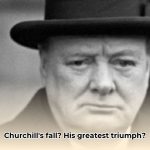Envision the Civil War era, but with real-time communication capabilities. This was the essence of Abraham Lincoln’s strategic advantage with the telegraph. This article details how Lincoln harnessed this groundbreaking technology—effectively the “Twitter” of its time—to strategically outmaneuver the Confederacy and steer the Union toward victory. We’ll explore his innovative strategies, highlighting how instantaneous communication enabled the Union to secure crucial battlefield wins and how significantly it contrasted with the slower, less reliable communication systems of the South. This is a narrative of how a single invention not only transformed military tactics but also provided Lincoln with a decisive edge, fundamentally reshaping the course of American history.
Abraham Lincoln’s Telegraph: A Decisive Tool for Victory
Imagine leading a nation through the turmoil of a civil war without the aid of modern communication devices like cell phones or the internet. This was the reality Abraham Lincoln faced. His pivotal asset? The telegraph, an electrical communications system that transcended mere message delivery; it revolutionized warfare itself. With the telegraph, Lincoln directed military engagements from Washington D.C., orchestrating strategies and bolstering Northern morale. More than just speed, it offered unprecedented command and redefined leadership.
Lincoln swiftly recognized the telegraph’s potential. He engaged actively, shaping events and often communicating directly with battlefield generals, bypassing traditional command hierarchies. This direct communication fostered a unique connection between the President and his commanders, enabling swift responses during conflict.
Strategic Impact of the Union’s Communication Network
The Union’s extensive deployment of telegraphy yielded a substantial advantage over the Confederacy, whose limited and unreliable telegraph lines paled in comparison. The Union’s superior network facilitated immediate reactions to battlefield developments, allowing Lincoln to rapidly deploy troops and supplies, and adapt strategies—a capability unmatched by the South. This real-time situational awareness proved critical in pivotal battles.
However, the telegraph was not without its flaws. Lines were susceptible to being cut, skilled operators were scarce, and communication speed sometimes led to errors or hasty decisions. Adverse weather conditions could disable lines, Confederate spies posed threats to message integrity, and simple human errors could have significant repercussions.
Lincoln’s Leadership: Balancing Micromanagement and Trust
Lincoln’s telegraphic approach showcased his exceptional leadership. While deeply involved in strategic details, he judiciously trusted his generals’ field expertise. His telegrams reveal a blend of directives, encouragement, and shrewd political maneuvering, effectively pioneering real-time military management. Lincoln also leveraged the telegraph to uplift the morale of the North, reassuring a weary public of the Union’s control.
Consider the Gettysburg Campaign, where Lincoln’s continuous communication with General Meade facilitated a rapid response to Robert E. Lee’s forces, maximizing Union advantages. While the telegraph did not guarantee victory, it significantly enhanced the Union’s prospects by enabling levels of coordination previously unattainable. Without such technology, managing the vast military undertaking might have resulted in disaster.
Shaping Public Opinion with Technology
Lincoln expanded the telegraph’s role beyond military operations to include direct communication with politicians, thereby influencing public sentiment and navigating the complexities of wartime governance. This ability to directly influence national discourse was transformative. The telegraph became instrumental in managing the political facets of the war, addressing public concerns, and garnering nationwide support.
Transformative Impact of Lincoln’s Telegraph Use on Warfare
Lincoln’s adept use of the telegraph significantly and permanently altered warfare and governance, demonstrating the power of near-instant communication. This advancement revolutionized military and political strategies, extending its influence far beyond the Civil War era. It underscored how innovation, guided by effective leadership, can achieve extraordinary outcomes. Historical data indicate that Union telegraph lines transmitted over one million messages, underscoring the scale of this communication revolution. The Civil War, though marked by brutality, offers a compelling illustration of how technology and strategic leadership converged to redefine history.
The Telegraph’s Impact on Civil War Battlefield Strategies
Key Takeaways:
- Lincoln leveraged the telegraph to gain unprecedented real-time insight into battlefield dynamics.
- Rapid communication significantly reduced decision-making and response times.
- The telegraph enabled Lincoln to directly influence military strategies and tactics.
Real-Time Command: Streamlining Decision Making
Before the advent of the telegraph, military commands relied on the speed of a horse, where news of battles, troop movements, and supply requisitions slowly traversed the landscape. Lincoln revolutionized this by turning the presidency into a real-time command hub, facilitating direct communication with his generals and often bypassing conventional command structures. This reduced communication times from days to mere minutes.
Accelerated Decision-Making: Achieving Strategic Agility
The value of rapid communication extended beyond mere speed to enhance reaction times. During battles, critical information was relayed almost instantaneously via telegraph, allowing Lincoln to dynamically adjust troop deployments, request reinforcements, and respond to shifting conditions. This enhanced agility significantly influenced the war’s outcome. Battles were increasingly decided not just by troop positioning but by the speed of information and adaptability.
Confederate Challenges: Strategic Disadvantage
The Union’s superior telegraphic capabilities offered a distinct strategic edge, enabling enhanced responses to enemy actions. The Confederate forces struggled to maintain pace due to their inferior communication networks. Lincoln capitalized on this asymmetry, often outmaneuvering adversaries through rapid information processing and swift responses, turning individual battles into pivotal moments of the broader war strategy.
The Broader Impact: Beyond the Battlefield
The telegraph’s influence extended beyond immediate battlefield operations, enhancing coordination across the Union army, improving logistical operations, and directly impacting public sentiment through rapid dissemination of wartime news. This capability shaped public perception and bolstered support for the Union.
Limitations and Risks: Potential for Misinformation
Despite its advantages, the telegraph presented challenges, including line failures, potential for operator errors, and risks of information distortion. Lincoln carefully weighed the telegraph’s speed against the potential for inaccurate information. The technology, while revolutionary, was not the sole determinant of Union victory; effective leadership, strategic acumen, and robust troop performance remained essential.
Telegraph Technology and its Limitations in 19th-Century Warfare
Key Takeaways:
- The Union’s robust telegraph network provided a crucial strategic advantage.
- Effective telegraph utilization necessitated skilled operators and efficient organization.
- Technological constraints, such as line vulnerability and misinformation risks, needed effective management.
Lincoln’s Strategic Weapon: The Telegraph
Abraham Lincoln recognized the telegraph as more than just a communication device; it was a strategic asset. He leveraged it to directly impact battlefield decisions, coordinating Union forces over vast distances in real-time, which significantly altered battle dynamics. Lincoln’s command of this innovation provided unprecedented control, influencing troop morale and broader war strategies through direct messages to commanders and the public.
Network of Information: Union’s Advantage
The Union controlled an expansive telegraph infrastructure, with over 15,000 miles of lines facilitating seamless information flow between Washington, D.C., and its forces, enabling the coordination of hundreds of thousands of soldiers across multiple states almost instantaneously.
Confederate Challenges: Technological Disparity
The Confederate telegraph system was notably smaller and less sophisticated, lacking the infrastructure and skilled personnel of the Union. Frequent disruptions and Union targeting further compromised their ability to coordinate defense and facilitate effective battlefield communication. This technological disparity significantly hampered their operational effectiveness.
Overcoming Limitations: Skill and Strategy
Despite its advantages, the Union’s telegraph system was prone to disruptions, operator errors, and sabotage. Information overload and the impulse for hasty decisions posed additional challenges. Strategic planning, leadership, and human factors remained critical, underscoring that technological advantages alone do not guarantee victory.
A Legacy of Innovation: Transforming Warfare
The Civil War highlights the transformative impact of technology on warfare. The telegraph fundamentally reshaped conflict dynamics, underscoring the interplay between technology, strategy, and leadership. The Union’s successful deployment of the telegraph demonstrates the power of effective communication in shaping military outcomes.
Lincoln’s Telegraphic Leadership Style and Its Impact on Union Generals
Key Takeaways:
- The telegraph revolutionized Civil War communication through near-instantaneous information exchange.
- Lincoln’s leadership style using telegraphy enabled direct influence on battlefield decisions, overcoming slower responses from traditional command structures.
- The Union’s extensive telegraph network contrasted with the Confederacy’s limited infrastructure, creating a strategic advantage.
Speed of Victory: A New Era of Warfare
Prior to the telegraph, military commands moved slowly via horse and rider, often rendering them outdated upon arrival. The Civil War saw the telegraph shrink operational distances and transform warfare.
Direct Command from the White House: Lincoln’s Leadership
President Lincoln understood the strategic implications of telegraphy, spending extensive time in the War Department telegraph office to personally manage communications. This active involvement allowed him to bypass the traditional command chain, directly influencing troop movements and tactical decisions, and showing decisive action to adapt swiftly to battlefield changes.
Contrast in Infrastructure: North Versus South
The North’s robust telegraph network provided a distinct advantage, enabling rapid troop coordination. The Confederacy struggled with a less developed infrastructure, where Union forces frequently targeted and disrupted communication lines, exacerbating their disadvantage.
Adaptation and Evolution: Leadership and Innovation
The telegraph necessitated adaptive leadership. Lincoln’s willingness to directly engage with his generals was revolutionary, reshaping battlefield dynamics. He not only received reports but also actively shaped the course of battles.
A Delicate Balance: Strategy and Technology
While pivotal, the telegraph was just one component of the Union’s success, complementing strategic planning, leadership, morale, and resources. It allowed for increased speed and coordination, influencing the balance of power.
Revolutionizing Warfare: A Lasting Impact
The Civil War marked a pivotal moment in military communications, demonstrating the power of technology to reshape warfare. Lincoln’s telegraphic leadership remains a case study in technology and military strategy. The telegraph’s speed fundamentally altered the war’s trajectory, proving that swift communication could be a decisive weapon.














